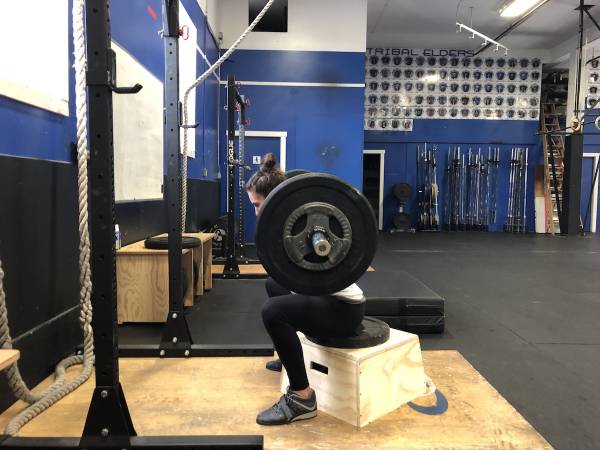“Why are we squatting to a box? Nobody cares how good my 1RM box squat is!”
That was a legitimate complaint fielded from a client who has been at my gym for seven years.
“Why are we squatting to a box? Nobody cares how good my 1RM box squat is!”
That was a legitimate complaint fielded from a client who has been at my gym for seven years.
“I just want to back squat, man,” he persisted.
I had a small laugh to myself for a moment, but then realized it was worth addressing, as I frequently use a box squat with my clients for various reasons and maybe haven’t made it clear enough to them why.
To my client, and to the countless clients out there who just want to back squat, here’s the thing: Box squatting will ultimately serve to improve your back squat.
The same way you can improve your deadlift without actually working on your deadlift, as I explained in this article, you can improve your back squat without back squatting, per se. In this case, you can improve your traditional back squat via the box squat.
So, what makes the box squat useful?
1. The Box Squat Is Harder
The box squat naturally causes your momentum to slow to a halt as you reach the box.
In this sense, it’s sort of just more analogous to life in that it forces you to be more efficient and to find ways to get something done without that useful momentum we like too much.
Practically speaking, what I mean is that unlike the traditional box squat, where you can use the stretch reflex and momentum to drive yourself out of the hole, the box squat forces you to figure out how to drive out of the bottom of the squat without momentum or speed. This will translate into making your drive out of the bottom even stronger once you eliminate the box.
2. Box Squats Promote the Right Muscle Fibers
The box squat puts you in a position where you can’t cheat, so to speak, by using just your quads to stand up. Instead, it puts you in a position where you will have to activate more muscle fibers in your glutes and your hamstrings to help get you out of that squat.
3. Box Squats Improve Your Squat Mechanics
The box squat helps improve squat mechanics as it forces you to use more of your muscle fibers in your posterior chain. Furthermore, it allows you to slow the movement down, which gives you an opportunity to truly focus on your mechanics. Stopping on the box provides a chance to double check your mechanics and positioning—Is my chest proud? Are my knees pointed out? Is my shin angle correct? Is my spine in a good position?—before driving out of the hole.
This is why I definitely resort to the box squat for new clients: It’s a way easier way to help them hone their squat mechanics from day 1, which goes a long way in preventing bad habits from forming.
4. Box Squats Save Your Knees
For people with a history of knee pain, or injuries especially, the box squat is a great way to sit back a little further in the squat to reduce loading your quads too much, which can place strain on your knees if your joints aren’t yet as bulletproof as they should be.

5. Box Squats Build Consistency
Similarly, new lifters (and sometimes even experienced ones) are inconsistent with their depth on a squat, especially as the barbell gets heavier.
The box doesn’t lie. It forces you to hit a consistent depth on every single squat, which helps you develop a more consistent squat once you eliminate the box and return to the more glamorous back squat.
As a final tip, if you have reached a point where your back squat has hit a plateau and you can’t seem to improve no matter how much you squat, try mixing it up and switch to a box squat for 6 weeks. You might be surprised how much benefit it will provide.






